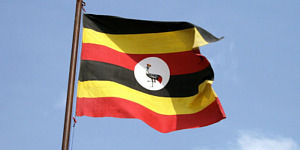Uganda's central bank lowered its Central Bank Rate (CBR) by 100 basis points to 9.0 percent, saying it believes "the benign inflation outlook provides room for a reduction in the policy rate to support economic growth."
It is Bank of Uganda's (BOU) first rate change since it raised the rate by the same amount in October 2018, returning its key rate to the level it was between February 2018 and October that year.
BOU lowered its inflation forecast sharply.
"The economy continues to grow but at a slowing rate," BOU said, noting gross domestic product slowed in the first half of 2019 from the second half of 2018 and the Composite Index of Economic Activity (CIEA) points to moderation of economic activity in the first quarter of the current 2019/20 financial year, which began July 1.
Uganda's GDP eased to annual growth of 5.4 percent in the second calendar quarter from 5.6 percent in the first quarter and in August BOU Governor Emmanuel Tumusiime-Mutebile had forecast growth in 2019/20 of 6.0 to 6.3 percent.
"The outlook is uncertain, particularly as a result of the unfavorable global economy," BOU said, adding a combination of widening fiscal and current account deficits could exert pressure on lending interest rates, leading to a further decline in economic growth.
Inflation in Uganda has been decelerating in the last three months and headline inflation fell to 1.9 percent in September from 2.1 percent in August, partly driven by a stronger shilling, moderating domestic demand and lower food prices.
Core inflation fell to 2.5 percent in September from 4.9 percent in June.
BOU lowered its forecast for core inflation to remain below its 5.0 percent target until the fourth quarter of 2020, with the risks to the downside and inflation forecast to converge to the target in the medium term, or over 2-3 years as demand side pressures remain subdued and the exchange rate is expected to remain relatively stable.
The revision to BOU's inflation forecast follows Tumusiime-Mutebile's forecast in August that core inflation would edge up and peak in the in the fourth quarter of 2020 at about 6.5 percent.







































